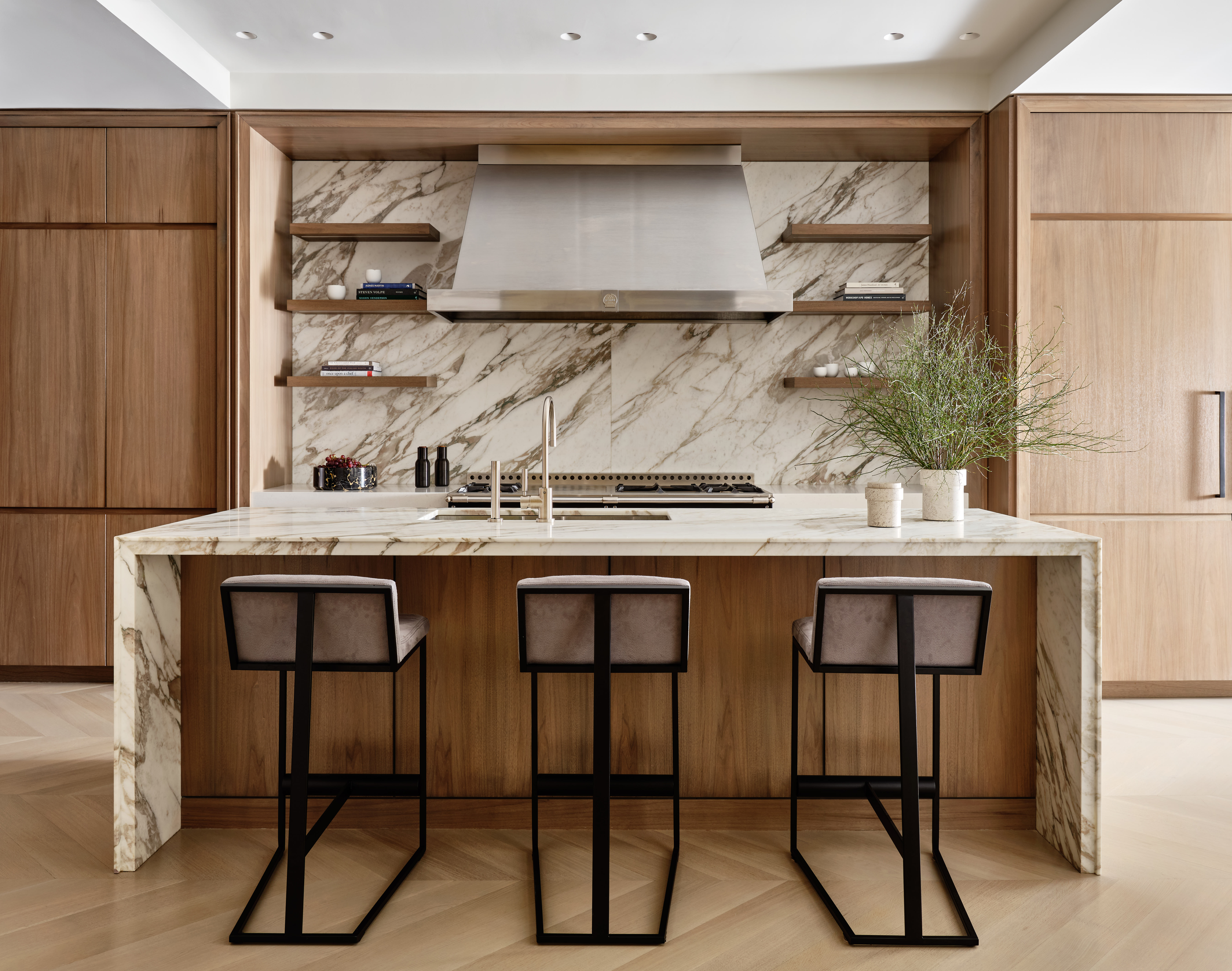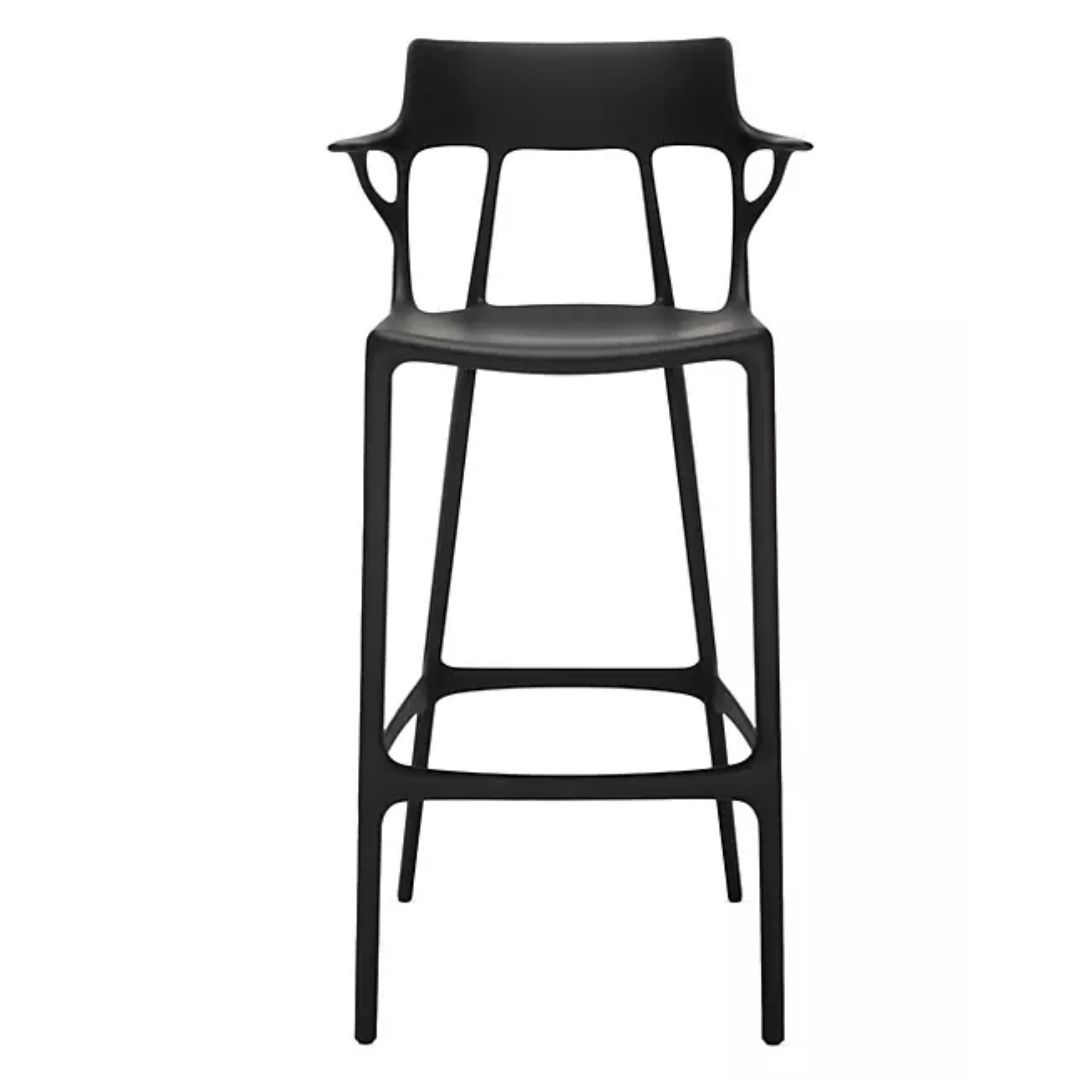Move Over Dining Rooms, the Kitchen Island Just Became the Coziest Eating Spot — All You Need is the Right Seating
Kitchen islands allow family and guests to have quick meals, or pull up a chair for intimate conversations. Experts tell us how to make this seating super cozy


The island is one of the most functional and versatile elements in the kitchen. Not only does it provide storage, and extra counter space for chopping and cleaning, but also doubles as a casual seating spot for quick meals, coffee, or wine. This one, stand-alone element can bring the family together. So how can you ensure that dining and perching here are always comfortable?
We asked experts for advice on how to perfectly design and curate the kitchen island seating. Take a look at these key points, and make this spot, the most favorite gathering place for the family.
1. Get the measurements right

To get the kitchen island seating right, the first step is to ensure you have the dimensions and sizing right — of the island and the seating. The minimum recommended size of an island is 2-by-4 feet. If you're choosing counter stools, consider an island with a standard 36-inch height. Low stools and dining chairs can tuck beneath a tabletop height of 30 inches.
'We get the measurements for the height and width of the island, and get as many chairs as we can fit based on what the client is looking for,' says Kristin Firine of Workshop APD. 'If they want more seating, we might get more petite stools; if they’re looking for fewer seats, we’ll go for wider ones. We go purely off dimensions, and source around it.'
2. Choose comfortable seats

To convert your island into the perfect kitchen breakfast bar, choose stools and chairs that offer maximum comfort. Consider stylish designs in brass or pop colors that will contribute to the look of your modern kitchen.
'The most comfortable island chairs, and the ones we use most often, have some sort of a back,' says Kristin. 'Whether you’re working or entertaining, or if you have kids, it’s more comfortable if you can lean on something. Even a low back is better than a backless chair. And of course, cushioning will soften it further — ideally in a leather or faux leather so it’s easy to clean.'
'Seat comfort and footrests are key when sourcing comfy barstools, as well as a wide enough seat base,' says Shelagh Conway, principal and founder of Triple Heart Design. 'Having a solid surface material adds a cleanability that you cannot get from fabric barstools, and some say you sacrifice comfort.'
3. Add cushioning to the seats

'We love adding sheepskin seating on a solid surface barstool for that extra coziness,' says Shelagh. 'Comfort, low profile, and modern were the key selection factors for barstools in this space. We love how the black speaks to the other black elements in the kitchen and the contrast created on the white oak cabinets.'
For a more cozy feel, add a warm kitchen lighting above that can offer task lighting (when dining), and transition to mood lighting in the evening as the family winds down for a tipple.
4. Consider a curved island for cozy seating

If you wish to design a kitchen island centerpiece that elevates the space instantly and offers the most snug seating, consider one in a curved design. Not only will the island add softness to the room, it will also create the most welcoming perching spot.
'This house had pre-existing arches and round lines so we thought it would make sense to design curves in the kitchen island too,' says Hélène Pinaud, co-founder of Heju. 'As it is an Ikea kitchen, it was important to choose a stone with some personality. This kitchen is soft with pastel tones so we brought in some contrast with a black ceiling light, and walnut and black stools for the bar counter.'
5. Go for extended islands

An innovative way to design and install a kitchen island is with an extended function. This is helpful for those kitchens that are extensively used for cooking, prepping, and socializing, so the extra platform can be used for multiple tasks. You could go for an extendable island that folds back when not in use. Or an extended one, made of a different material such that the island and the extension can be used separately.
'To add surface, consider building in an extendable countertop that slides neatly beneath your existing counter or just fits into the scheme of the room,' says Julia Mack, founder of Julia Mack Design. 'This is a great tool when you are multitasking with lots of family members pitching in: think busy holiday dinners.'
3 comfy chairs to buy for the kitchen island
The Livingetc newsletters are your inside source for what’s shaping interiors now - and what’s next. Discover trend forecasts, smart style ideas, and curated shopping inspiration that brings design to life. Subscribe today and stay ahead of the curve.

Aditi Sharma Maheshwari started her career at The Address (The Times of India), a tabloid on interiors and art. She wrote profiles of Indian artists, designers, and architects, and covered inspiring houses and commercial properties. After four years, she moved to ELLE DECOR as a senior features writer, where she contributed to the magazine and website, and also worked alongside the events team on India Design ID — the brand’s 10-day, annual design show. She wrote across topics: from designer interviews, and house tours, to new product launches, shopping pages, and reviews. After three years, she was hired as the senior editor at Houzz. The website content focused on practical advice on decorating the home and making design feel more approachable. She created fresh series on budget buys, design hacks, and DIYs, all backed with expert advice. Equipped with sizable knowledge of the industry and with a good network, she moved to Architectural Digest (Conde Nast) as the digital editor. The publication's focus was on high-end design, and her content highlighted A-listers, starchitects, and high-concept products, all customized for an audience that loves and invests in luxury. After a two-year stint, she moved to the UK and was hired at Livingetc as a design editor. She now freelances for a variety of interiors publications.


